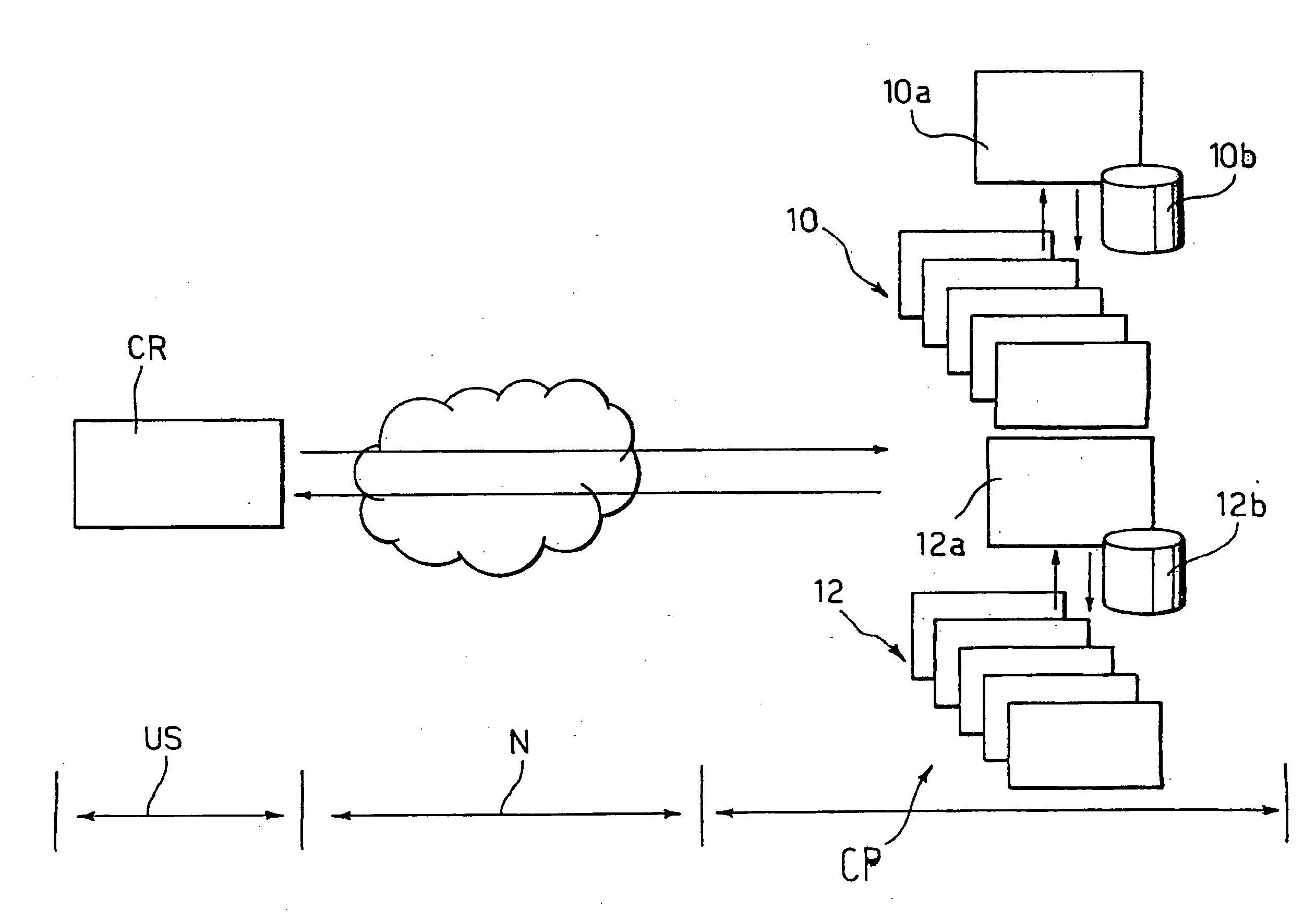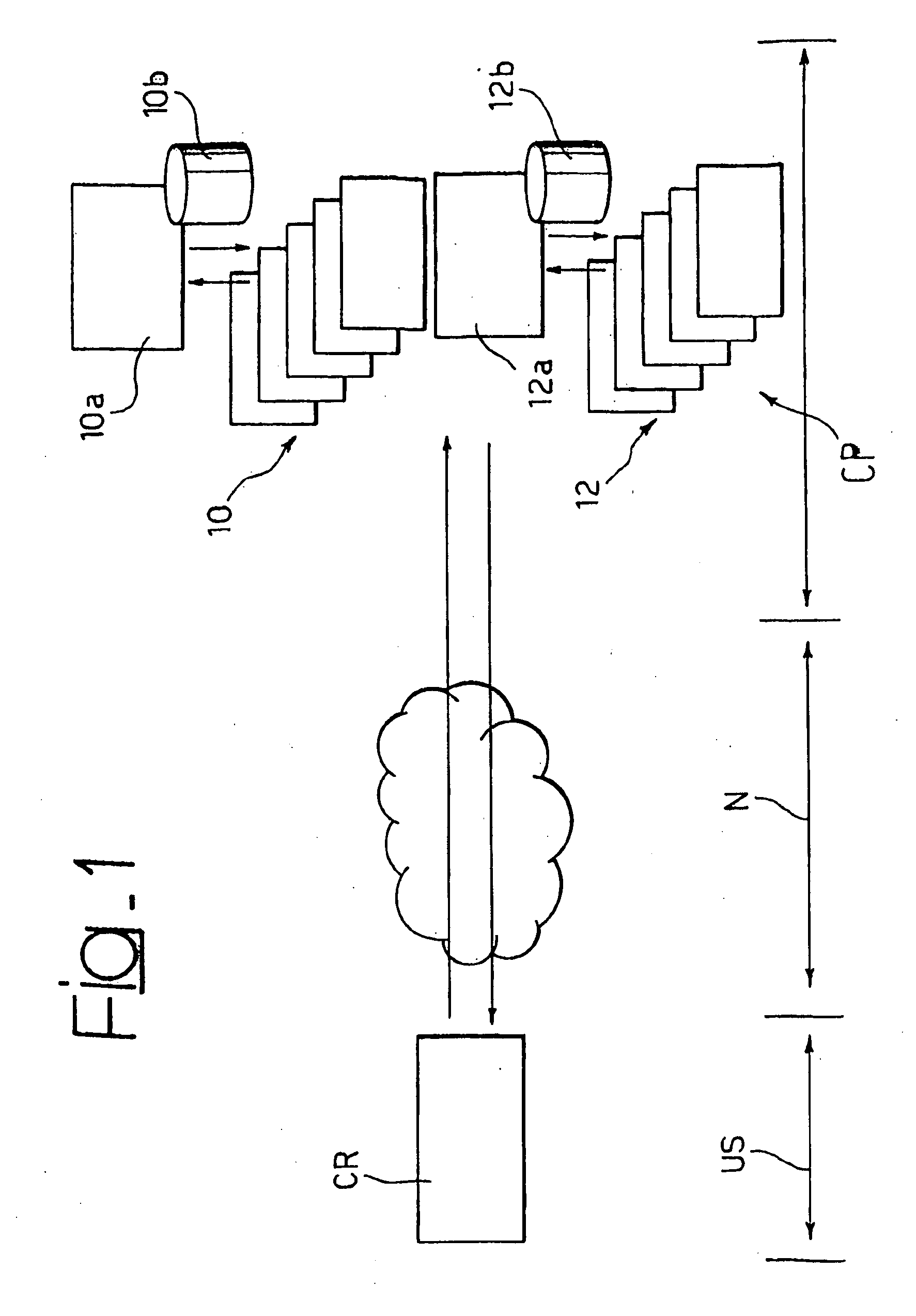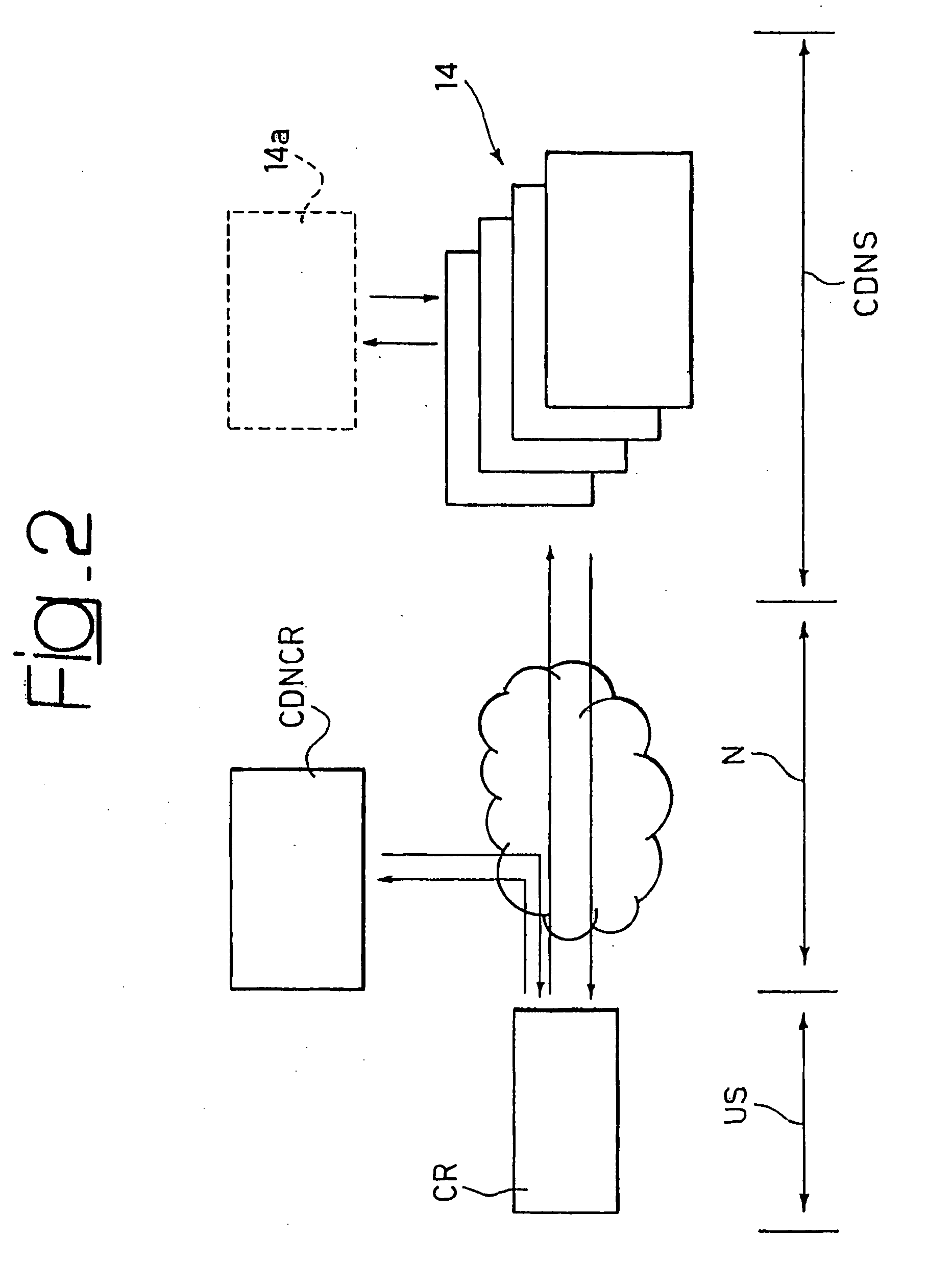Method and System for Handling Content Delivery in Communication Networks
a communication network and content technology, applied in the field of content delivery in communication networks, can solve the problems of not being able to take advantage of any facility already installed, adding complexity, and running the risk of real problems for service providers running service centres, etc., and achieve the effect of easy support of new protocols
- Summary
- Abstract
- Description
- Claims
- Application Information
AI Technical Summary
Benefits of technology
Problems solved by technology
Method used
Image
Examples
Embodiment Construction
[0073]FIG. 3 of the annexed drawing shows a possible location of the components of a system as described herein with respect with other objects and elements involved in operation thereof. In general terms, parts, components or elements identical, similar or equivalent to homologous parts, components or elements already described in connection with FIGS. 1 and 2 are designated by the same reference letters and / or numerals.
[0074]Specifically, the arrangement of FIG. 3 includes a gateway 20 (hereinafter defined Dynamic Conditional Content Access or DCCA gateway) arranged on the connection path between the content requester CR at the user site US and a content server arrangement 26 (adapted to be configured according to different arrangements, as better detailed in the following) located at the content delivery site 24.
[0075]The gateway 20 is configured for performing a number of functions such as triggering, policing, filtering, juggling and reinjecting in respect of the traffic flowin...
PUM
 Login to View More
Login to View More Abstract
Description
Claims
Application Information
 Login to View More
Login to View More - R&D
- Intellectual Property
- Life Sciences
- Materials
- Tech Scout
- Unparalleled Data Quality
- Higher Quality Content
- 60% Fewer Hallucinations
Browse by: Latest US Patents, China's latest patents, Technical Efficacy Thesaurus, Application Domain, Technology Topic, Popular Technical Reports.
© 2025 PatSnap. All rights reserved.Legal|Privacy policy|Modern Slavery Act Transparency Statement|Sitemap|About US| Contact US: help@patsnap.com



